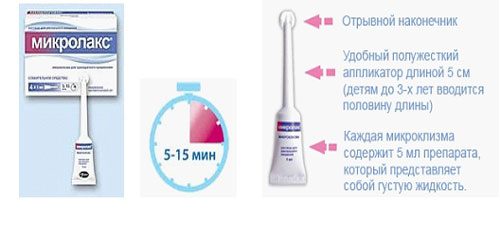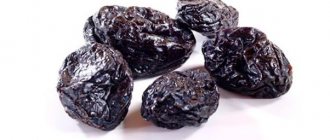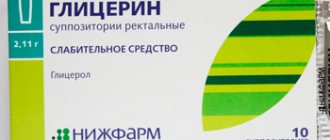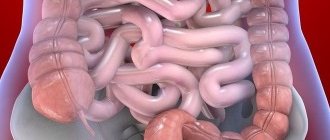| Microlax | |
| Industry | Over-the-counter products |
| Current owner | Johnson & Johnson |
| Country of origin | Sweden |
| Getting started | 1960 |
| Markets | the whole world |
| Former owners | Pharmacia |
| Web site | microlax.ru |
Microlax
is a five-milliliter tube of liquid gel that helps ease bowel movements,[1] a fast-acting microenema with a laxative effect. According to the ATC system (anatomical-therapeutic-chemical classification), Microlax belongs to group A06 (Laxatives).
Main active ingredients: sodium lauryl sulfoacetate (0.90% w/v) and sodium citrate (9.0% w/v).[2]
Story
1960 - Microclyster "Microlax" was created in Sweden for. Its developers are Paul Gunnar Embring from Uppsala and Per Ove Mattsson from Stockholm. The drug was originally conceived as a means to cleanse the intestines before X-ray examination “without the risk of disturbing the balance of fluid in the body.”[3]
The drug went on sale on June 16, 1960.[4]
1962 - The Microlax trademark was registered in the United States on February 20, 1962.[4]
1963 - In May 1963, the first medical article on the drug Microlax was published in the Danish journal Ugeskrift for Læger (Physicians' Weekly Magazine).[5]
1964 - Microenemas containing sodium citrate and sodium lauryl sulfoacetate were tested in bowel preparation for sigmoidoscopy. The results were published in the American Journal of Proctology.[6]
1965 - The results of a comparative study of Microlax and enema were published in the journal Ugeskrift for Læger.[7]
1967 - The Medical Journal of Australia published an article, “The Use of Microenemas in Preparation for Sigmoidoscopy,” proving the reliability of studies conducted in the USA in 1964 and confirming the effectiveness of the use of the drug Microlax in preparation for sigmoidoscopy.[8]
1996 - A study published in the Journal of the Royal Society of Physicians proposed giving Microlax microenemas to all patients scheduled for sigmoidoscopy.[9]
What contraindications are there for this procedure?
Any laxatives, including enemas, are prohibited if a person has an increase in body temperature and general weakness of the body; the procedure should also be avoided if there are acute infections in the body and if the rectal mucosa is damaged. Doctors strictly prohibit introducing an herbal infusion or medicine into the intestines if an operation has been performed on the digestive tract, and the process of restoring the organ has not yet been sufficiently completed.
You should refrain from using this cleansing method if you have a tumor or heart failure in the intestines, since the use of such an enema leads to serious negative health consequences.
Medical use
Microlax is used mainly to treat constipation.
In surgery, the drug is used for preoperative bowel cleansing.[10]
In clinical studies, Microlax is used before X-ray or physical examination of the intestine.
Microlax can be given to children; the drug has no age restrictions.[11] For children under three years of age, it is recommended that the applicator be inserted halfway.[12]
Microlax can be used during pregnancy.[13]
The drug can be used as a laxative during the postpartum period[14] and is compatible with breastfeeding[15].
Microlax (like other saline laxatives) is not recommended for use in cases of intestinal phlegmon.[16]
Microclysters at home
You can free the intestines from toxins and excreta at home using the following microenemas:
- laxatives;
- cleansing;
- softening.
To perform cleaning, you can use a 200 ml Janet multi-purpose syringe, ready-made microenemas or syringes as devices. Unlike disposable tubes, syringes can be used not only to rinse with liquid, but also to inject jelly masses based on oil, honey or glycerin.
Laxative microenemas
The main purpose of these microenemas lies in their name. They are designed to have the effect of loosening stool. For enemas, an oil or saline solution is mainly used, prepared from 10% sodium chloride or magnesium sulfate with a concentration of up to 30%. Laxative enemas give positive treatment results in a short time. They can be used in the absence of inflammation or ulcers of the colon.
If constipation is long-term, it is recommended to use oil enemas. Olive, sunflower, hemp oil or a Vaseline-based solution are better suited for their preparation. The microenema mixture should first be heated to 40 degrees. After administering the product, you must remain in a horizontal position for a quarter of an hour so that the oil spreads well throughout the intestines. Following this recommendation will allow you to empty your bowels as much as possible.
Cleansing microenemas
For this type of procedure the following microenemas are used:
- Starch. Rice, wheat, potato or corn starch can be used as a base. A solution can be prepared by diluting 5 grams of this substance in 100 milliliters of water. After mixing these ingredients, you need to add 100 ml of boiling water. The resulting solution must be cooled to 40 degrees and can be injected into the anus.
- Honey. They are prepared from 1 tablespoon of honey and the same amount of lemon juice, 200 ml of water. After mixing these ingredients, the mixture is introduced into the intestines and left for a quarter of an hour.
- Coffee microenemas. They are prepared from 200 ml of freshly boiled water and three tablespoons (tablespoons) of ground coffee. After thorough mixing, the solution should be boiled for another 3 minutes. Then turn the heat to low and simmer for another 12 minutes. The product is used in a cooled form and pre-strained. The advantage of the coffee solution is its ability to have a positive effect on the liver and gallbladder, as well as quickly rid the body of toxins and toxic substances.
Indications for cleansing microenemas:
- joint pain in the sacrum and lower back;
- menstrual irregularities;
- peeling and dry skin;
- presence of hemorrhoids;
- cystitis;
- preparation for childbirth and operations, abdominal examinations.
Microenemas should not be used in the following situations:
- exacerbation of any inflammation in the abdominal cavity and intestines;
- body temperature is higher than normal;
- loss of strength and general weakness;
- tumors found in the colon;
- recent abdominal surgery;
- heart and vascular diseases.
The presence of at least one contraindication requires mandatory consultation with a doctor before using microenemas on your own.
Softening microenemas
These enemas are most often prescribed for constipation and increased gas formation. They are recommended for people with bodies prone to dehydration, as well as those who feel constant chilliness in their extremities.
Softening enemas are based on milk. It is recommended to add 20 grams of butter to 100 grams of cow's milk and heat until completely melted. Once cooled, the liquid is injected into the intestines. If you add a little decoction of wormwood (a tablespoon) to the melted butter, the microenema solution will help restore the functions of the biliary tract.
The procedure is best performed in the evening after sunset. After three times of use, the stool becomes softer and the microflora in the intestines is normalized.
Mechanism of action
Sodium citrate (sodium citrate) is one of the most effective osmotic laxatives (second only to magnesium citrate in effectiveness).[16] The laxative effect is due to the occurrence of an osmotic imbalance, as a result of which bound water in the feces is displaced and enters the large intestine. Increasing the amount of water helps to thin the stool.
Sodium lauryl sulfoacetate enhances the moisturizing and penetrating ability of the solution, sorbitol enhances the water-releasing effect of sodium citrate, glycerin facilitates the emptying process.
The combined effect of the components of the Microlax drug helps soften hard stool and eliminate constipation in a very short period of time (usually from 2[21] to 15 minutes[22]).
The components of the drug "Microlax" are not absorbed by the body, are not distributed throughout it and are not absorbed; all components are excreted in the feces.[22]
When is it necessary to use an enema?
As already mentioned, a small enema can help with delayed bowel movements, but it should only be done if the patient exhibits the main symptoms. For example, when pain occurs in the lumbar region, a person is often tormented by the formation of gases and pain in the intestines, sheep feces and general weakness in the body may occur. Even if only some types of symptoms are present, it is worth using microenemas for constipation to eliminate unpleasant symptoms. One of the most popular and recommended microenemas is Microlax.
Before some operations and before the birth process, it is not necessary to completely cleanse the intestines, so doctors recommend introducing only a small amount of liquid into the rectum to eliminate excess stool from the rectum.
It is important to do this procedure before examining the intestines using an X-ray machine. At the same time, this enema is a great help when the intestines are too clogged with feces; after carrying out the procedure, you can quickly and easily start the process of defecation.
Causes
Constipation can be not only an independent disease, but also a symptom of a number of pathologies and conditions. The following are the main causes of constipation:
- Diseases of the gastrointestinal tract: chronic colitis, biliary dyskinesia, gastric ulcer, the presence of obstacles to the passage of feces (tumors, diverticula, etc.).
- Eating disorders: excess fatty foods, insufficient amount of coarse plant fiber in the diet, improper drinking regimen. Depending on the nature of the diet, constipation can be either acute (with single errors in the menu) or chronic.
- Low physical activity - intestinal motility and the speed of passage of feces through it depend on the general activity of the person. With a sedentary lifestyle, irregular bowel movements and difficulty defecating are much more common.
- Other reasons: pregnancy, psychological problems and stress (child entering kindergarten, school, etc.), high temperature (due to intense loss of fluid), taking certain medications, immaturity of the gastrointestinal tract in infants.
The preparation process and technique for performing microenemas
To start the cleansing process, you first need to properly prepare yourself for this method, for this you should purchase a special “Zhane” syringe, it holds about two hundred milliliters of liquid, but if you don’t have such a syringe at home, then you can use a simple syringe. Next, take a decoction of herbs or another type of cleansing liquid, warm it up to exactly 37 degrees, and then fill a bulb or syringe with this product. Before insertion into the rectum, the tip must be lubricated with Vaseline or baby cream.

Well, now we can also talk about how the process of administering an enema will generally proceed; for this, the patient prepares a comfortable, flat surface on which to lie down comfortably. Then you need to turn over on your side and bend your knees so that they are slightly pressed against the abdominal area, but not too much. Using the left hand, the patient spreads the buttocks, and with the right hand, carefully inserts the tip of the syringe into the anus; the catheter must be lubricated with Vaseline for easy insertion, while immersing the tip five or ten centimeters into the rectum. Next, the substance is introduced into the intestines; it is not recommended to rush during this process; do not press the bulb too hard, as the solution should move through the intestines slowly and evenly.
If a special syringe was used, then after inserting the tip into the anus, it is necessary to connect a special catheter to it, and only then begin administering the liquid. Once the process is completed, it is necessary to disconnect the syringe from the catheter, draw some air into it and reconnect it. Next, the remaining fluid from the catheter is injected into the rectum.
Constipation in pregnant and lactating women
Due to hormonal changes in the body of pregnant women, as well as against the background of compression of intestinal loops by the growing fetus during the period of bearing a child, and then during feeding, constipation often appears.
Meanwhile, many laxatives are contraindicated for pregnant and lactating women. Changing your diet and increasing physical activity (within permitted limits) also do not always give a positive result.
For treatment at home and during a stay in the maternity hospital, pregnant women can use MICROLAX®, which is suitable for both the expectant mother and the child. It can be used for a long time, so it is also suitable for combating chronic constipation in pregnant women.










